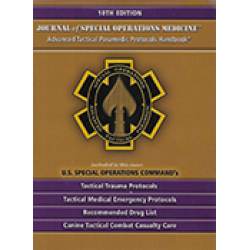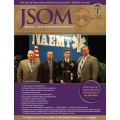Use of Physical Therapists to Identify and Treat Musculoskeletal Injuries at "The Tip of the Trident"
Shaw J, Brown L, Jansen B 17(4). 45 - 48 (Journal Article)
Musculoskeletal injuries continue to be the most common cause of decreased readiness and loss of productivity in all military environments. In commands with smaller footprints, such as Naval Special Warfare (NSW), every asset is critical for mission success. Studies have shown that early intervention by a medical provider can enhance healing and maintain unit readiness by preventing medical evacuations. Reports are limited with regard to Special Forces commands, especially during deployment. This article describes the injury characteristics and treatment of injuries seen by a physical therapist while deployed at forward operation commands embedded with NSW Group 2 Team 4. Over 4 months, 282 patients were evaluated and treated in southeast Afghanistan. In descending order, the three most common injured body regions were the lumbar/sacral spine (n = 82), shoulder (n = 59), and knee (n = 28). Therapy exercises (n = 461) were the most frequently performed treatment modality, followed by mobilization/manipulation (n = 394) and dry needling (n = 176). No patient evaluated was medically evacuated from the area or sent to an advanced medical site. Our data are similar to other published data reported on deployed units in terms of mechanisms and locations of injuries; thus, Special Forces commands do not appear to have unique injury patterns. These results support continued use of physical therapists in forward operations because of their ability to evaluate injuries and provide treatment modalities that help maintain the integrity of small commands at the site of injury.


 Español
Español 




